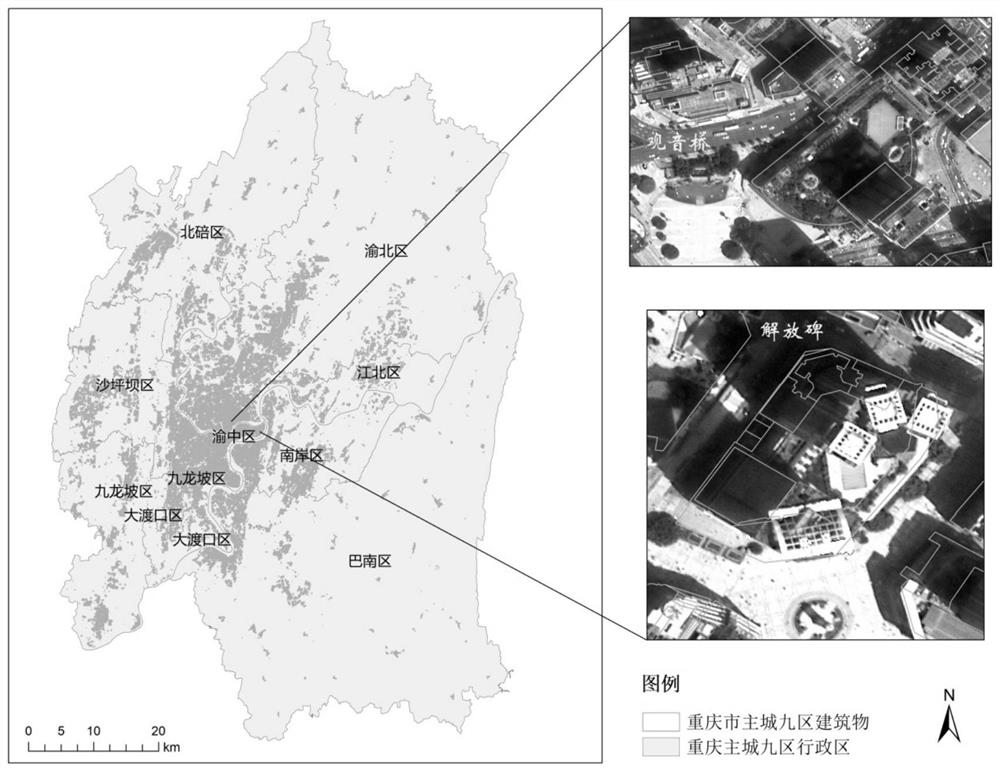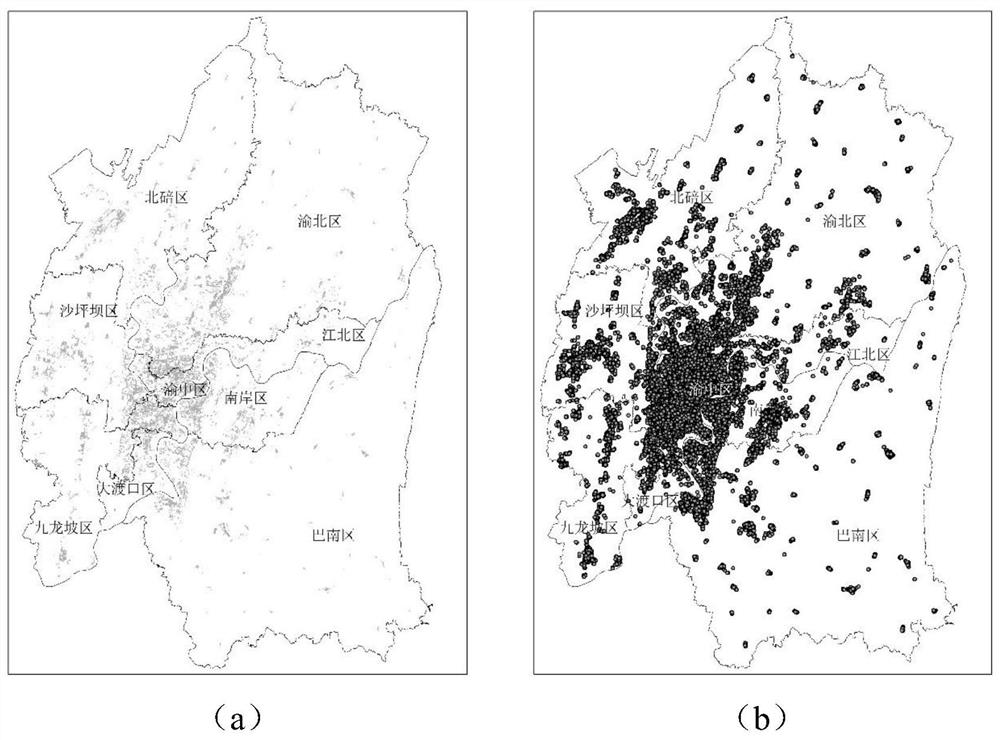A Boundary Recognition System for Business Agglomeration Areas
A boundary recognition and boundary technology, applied in character and pattern recognition, instruments, calculations, etc., can solve the problems of relying on human experience intervention, poor objectivity, and difficulty in obtaining a large amount of data, and achieves the reduction of human intervention, reduction of constraints, The effect of improving objectivity
- Summary
- Abstract
- Description
- Claims
- Application Information
AI Technical Summary
Problems solved by technology
Method used
Image
Examples
Embodiment 1
[0045] see Figure 1 to Figure 5 , a business agglomeration area boundary identification system, including building information acquisition module, target building screening module, density map generation module, agglomeration area preliminary vector boundary generation module, agglomeration area boundary identification module and database.
[0046] The building information acquisition module acquires the building outline vector polygon and attribute information in the area to be detected, and sends them to the target building screening module, the aggregation area preliminary vector boundary generation module and the aggregation area boundary identification module respectively.
[0047] The attribute information of the building outline vector patch includes building usage, building area, building name and building storey.
[0048] The target building screening module filters out the target building outline vector polygonal pattern according to the building usage in the attrib...
Embodiment 2
[0074] A method for using a business agglomeration area boundary identification system, the specific steps are as follows:
[0075] 1) First, use the env class in the Arcpy site package to obtain and set the environment value, and set the database storing the building information survey results as the workspace. The attribute table of building information survey results data includes building information such as the number of floors above ground, the number of floors below ground, the total construction area, address, name, structure, and completion year of each building, as well as the use of each floor (residential). , commercial, administrative commerce, industry, military, education and scientific research, medical and health care, etc.), floor area and other floor information, building data in the nine districts of the main city of Chongqing such as figure 2 As shown, use Python to slice and compare the attribute values of the fields that record the usage of each floor...
PUM
 Login to View More
Login to View More Abstract
Description
Claims
Application Information
 Login to View More
Login to View More - R&D
- Intellectual Property
- Life Sciences
- Materials
- Tech Scout
- Unparalleled Data Quality
- Higher Quality Content
- 60% Fewer Hallucinations
Browse by: Latest US Patents, China's latest patents, Technical Efficacy Thesaurus, Application Domain, Technology Topic, Popular Technical Reports.
© 2025 PatSnap. All rights reserved.Legal|Privacy policy|Modern Slavery Act Transparency Statement|Sitemap|About US| Contact US: help@patsnap.com



